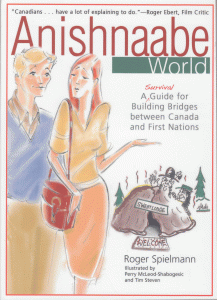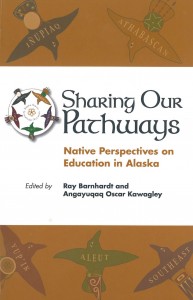Module 4.
1. Indigenous Perspectives on Globalization: Self-Determination Through Autonomous Media Creation. The site title above is self-explanatory. This is a site which gives information on the challenge experienced by indigenous communities and the powerful influence of technology. Here is an excerpt;
“Media creation today is more powerful than ever before because of the far-reaching influence of new technologies intricately connected to the forces of globalization. There have been astronomical advances in the area of satellite technology and telecommunications making the world seem smaller by enabling the citizens of the globe to communicate through various media on a level never before known. While these technological advances present new opportunities for Indigenous communities to build platforms for autonomous media representation, the realities of accessing significant telecommunications technology and airtime is the challenge.
http://globalautonomy.ca/global1/summary.jsp?index=RS_Tabobondung_MediaCreation.xml (Retrieved, November 7, 2012)
2.This is a great site. It presents information on traditional knowledge and culture in indigenous communities.
“The Traditional Knowledge Information Portal has been developed in order to promote awareness and enhance access by indigenous and local communities to information on traditional knowledge, innovations and practices relevant for the conservation and sustainable use of biological diversity. (http://www.cbd.int/tk/. Retrieved November 7, 2012)
3. The Aboriginal Media Lab is an excellent example of the use of technology by Aboriginal people.
“Reflecting on the traditional role of storytellers and artists in our communities, the Aboriginal Media Lab merges art, scholarly research and media to contribute to the strength of Aboriginal cultures and to help build inclusive communities, where all individuals are valued and have the resources to live creative, purposeful lives. The Aboriginal Media Lab provides environments to foster innovation in the area of academic research, media exploration and community-development.
The AML promotes understanding of Aboriginal knowledge by encouraging Aboriginal-based ideas, research methodologies and new media tools ensuring we all have a stake in how our knowledge is maintained, reframed, seeded, grown, asserted and shared. Through think-tanks, research projects, new media experiments, media productions, journals and other means of exchange and communications, the Aboriginal Media Lab (AML) seeks to inspire new relationships in the production and analysis of Aboriginal knowledge, history and media”
(http://www.aboriginalmedialab.com/web/. Retrieved November 7, 2012)
4. The site below is a very interesting one. It allows aboriginal communities to save their collected information such as maps of land, diagrams etc.
The acronym LOUIS means: Land Occupancy and Use Information System
‘Indigenous communities in Canada have produced thousands of cultural reports and maps over the past 40 years that endeavour to show the ways in which their territories are critical to their survival. All too often, once reports or maps have been used for their immediate purpose they are lost or forgotten and the community never benefits from that research again. If information is lost or difficult to access, the result can be the repetitive and unnecessary gathering of the same information.
LOUIS is a new tool that allows any community to easily bring together all of its cultural research – both text and maps – and archive it in a single, secure format to ensure information is accessible and usable, and nothing is lost”
(http://aproposinfosystems.com/products/louis/ Retrieved November 7, 2012)
5. The site below is another great example of the use of technology by Indigenous people.
“As indigenous peoples around the world face extreme climatic events that threaten their livelihoods and well-being, responses that stem from indigenous knowledge, experiences, wisdom and world views are urgently needed. The Indigenous Peoples’ Bio-cultural Climate Change Assessment Initiative (IPCCA) has emerged as an innovative response, bringing together indigenous knowledge and science in a process which links bio-cultural realities with complex global processes. Use of bio-cultural methods and tools involve communities from around the world in the assessment of climate change and local well-being and the development of evidence-based responses for climate change adaptation. We believe that indigenous adaptation processes must continue nurturing bio-cultural diversity in order to build resilience and better respond and adapt to the changes we face” ( http://ipcca.info/ Retrieved, November 7, 2012)

